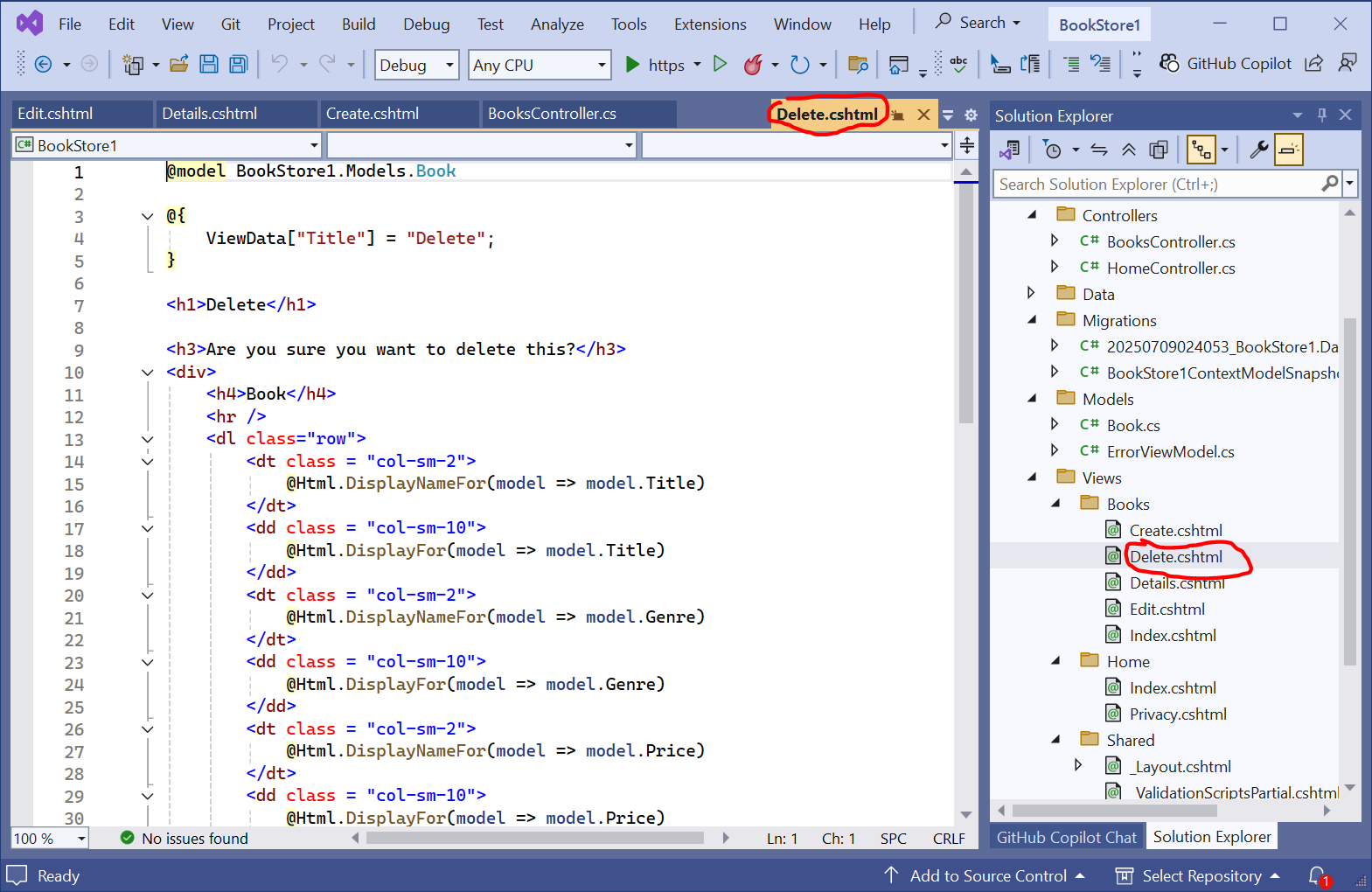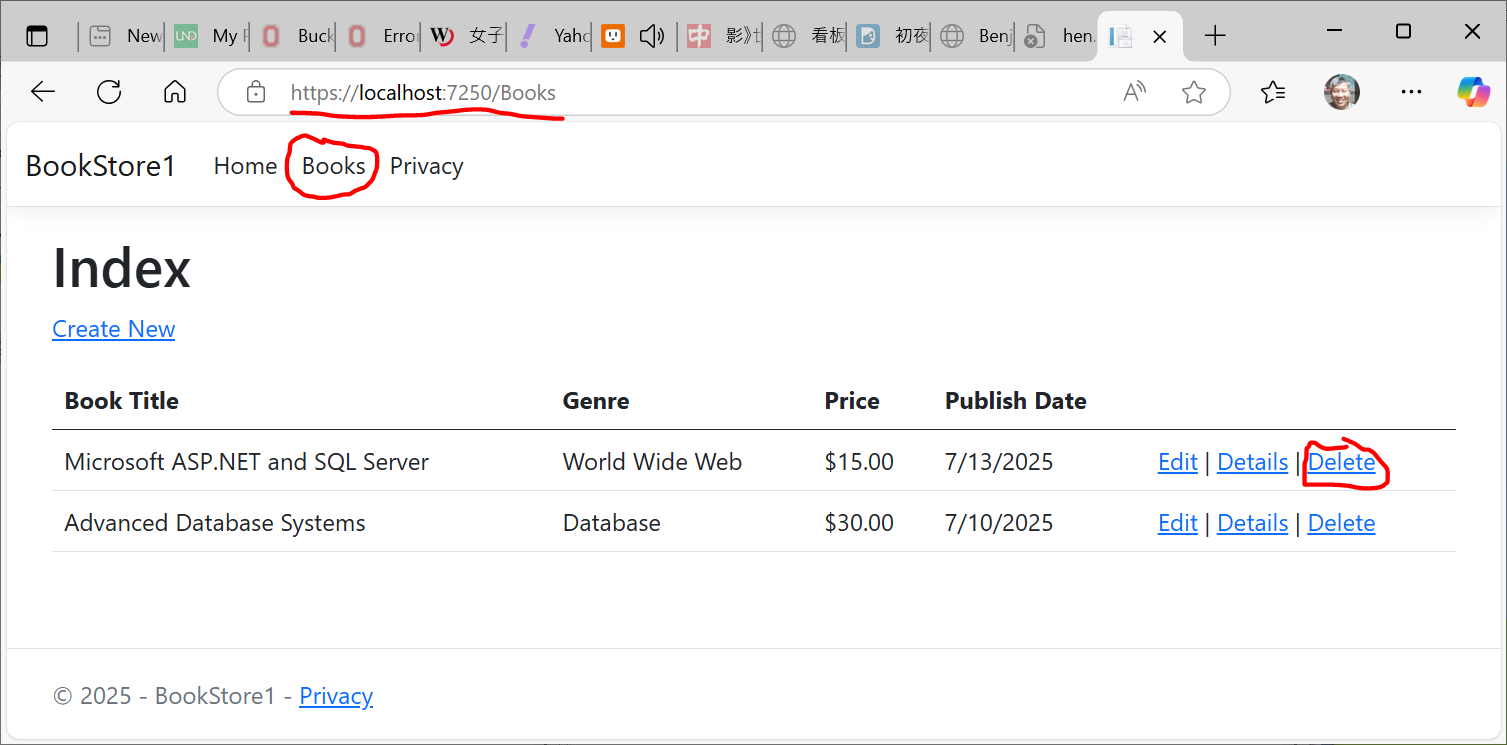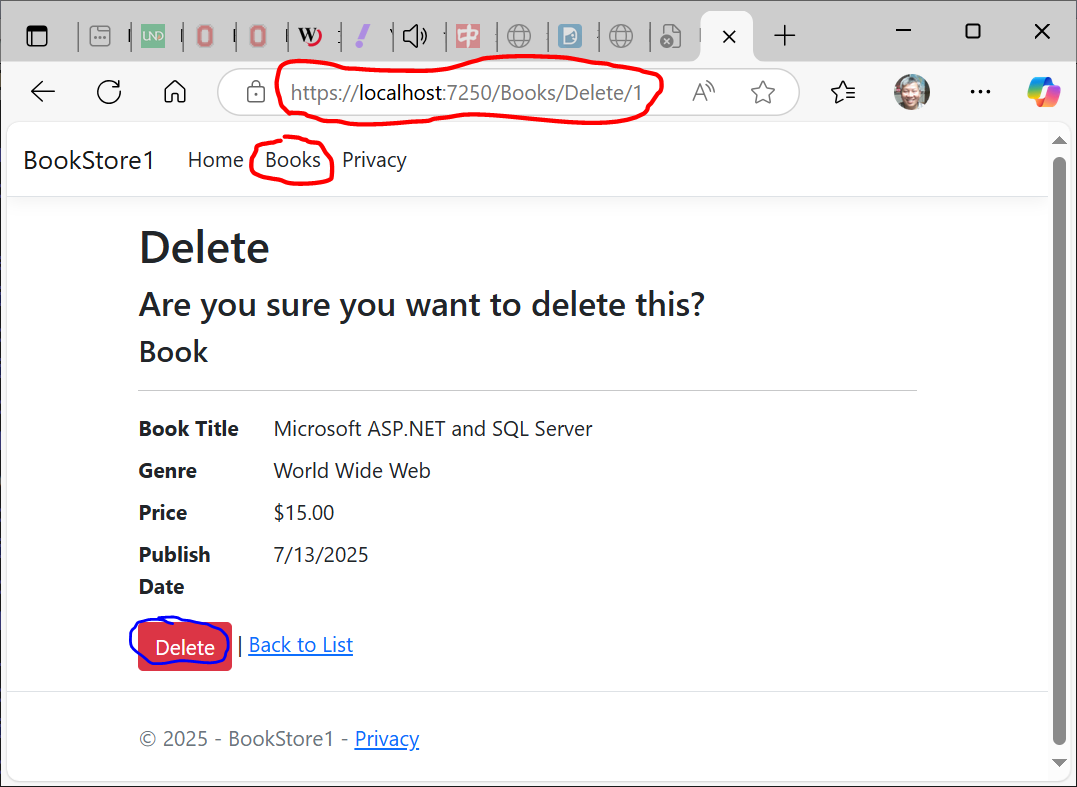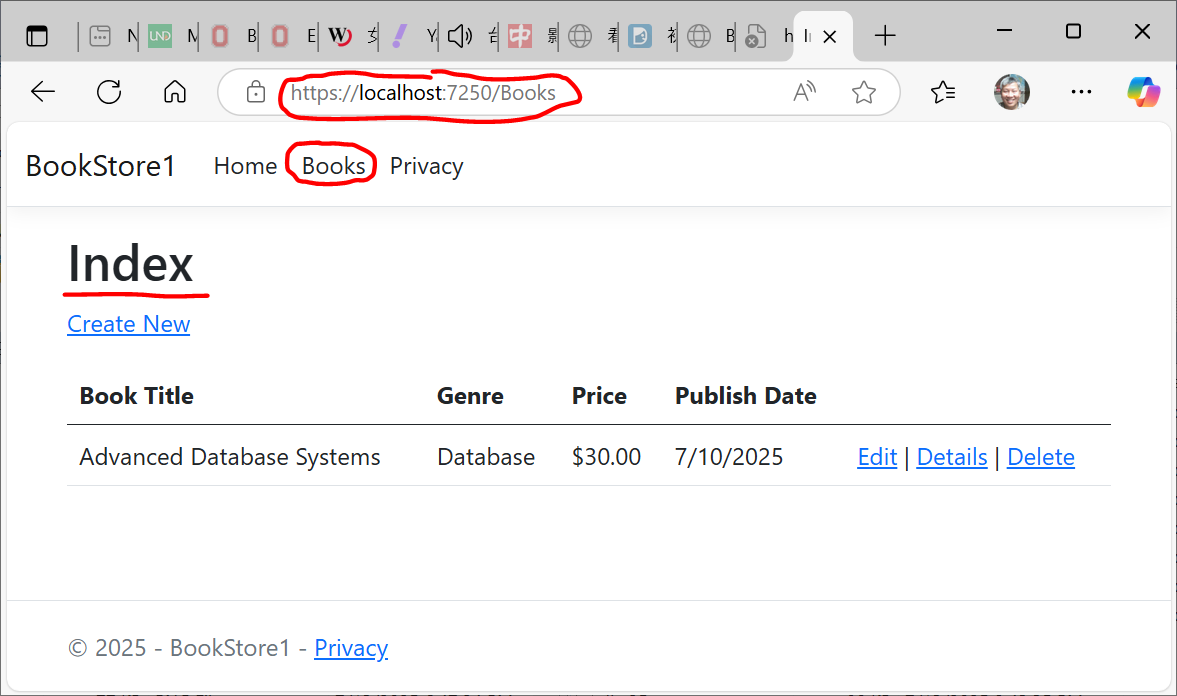Books/Delete.cshtml


⇓

⇓


|
@model BookStore1.Models.Book
@{ ViewData["Title"] = "Delete"; }
<h1>Delete</h1>
<h3>Are you sure you want to delete this?</h3>
<div>
<h4>Book</h4><hr />
<dl class="row">
<dt class = "col-sm-2">
@Html.DisplayNameFor( model => model.Title )
</dt>
<dd class = "col-sm-10">
@Html.DisplayFor( model => model.Title )
</dd>
<dt class = "col-sm-2">
@Html.DisplayNameFor( model => model.Genre )
</dt>
<dd class = "col-sm-10">
@Html.DisplayFor( model => model.Genre )
</dd>
<dt class = "col-sm-2">
@Html.DisplayNameFor( model => model.Price )
</dt>
<dd class = "col-sm-10">
@Html.DisplayFor( model => model.Price )
</dd>
<dt class = "col-sm-2">
@Html.DisplayNameFor( model => model.PublishDate )
</dt>
<dd class = "col-sm-10">
@Html.DisplayFor( model => model.PublishDate )
</dd>
</dl>
<form asp-action="Delete">
<input type="hidden" asp-for="Id" />
<input type="submit" value="Delete" class="btn btn-danger" /> |
<a asp-action="Index">Back to List</a>
</form>
</div>
|
|
“I have enough money to last me the rest of my life... unless I buy something.” — Jackie Mason on wealth |